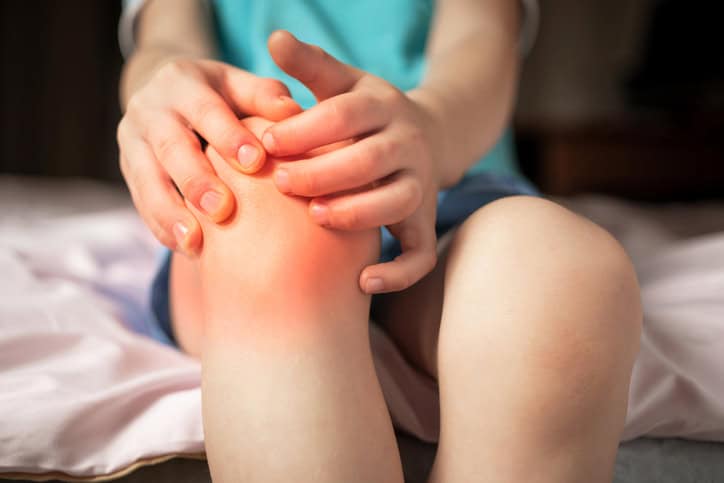When Your Child’s Joints Ache
It can be alarming when your toddler starts limping, your grade-schooler complains of daily aches, or your teenager seems irritable and withdraws from sports or dance because they “just can’t do it anymore.” While arthritis is often associated with older adults, children can develop arthritis too—specifically, Juvenile Idiopathic Arthritis (JIA).
What Is Juvenile Idiopathic Arthritis?
Juvenile Idiopathic Arthritis is an autoimmune condition in which the immune system mistakenly attacks the joints, causing painful inflammation. According to the Arthritis Foundation, around 300,000 children in the U.S. and as many as 3 million children worldwide are affected by JIA. The term “idiopathic” means “of unknown origin,” reflecting that, in many cases of JIA, there’s no clearly identifiable underlying cause.
Who Gets JIA?
JIA can present anywhere from 6 months of age to 16 years old. While there isn’t a single known genetic factor, children who have relatives with other inflammatory or autoimmune conditions may be at higher risk. At Alzein Pediatrics, your provider will look at the number of joints affected and the duration of symptoms when diagnosing JIA:
- Mild cases may involve one inflamed joint for at least 6 weeks.
- Severe cases may involve five or more inflamed joints over a 6-month period.
Signs and Symptoms
Children might complain of joint pain, particularly in the morning or after resting. In very young children who cannot describe their discomfort, parents may first notice limping or avoidance of certain movements. Key symptoms include:
- Joint swelling (If your child has any joint swelling, they should be evaluated the same day—DO NOT delay seeking medical attention as there are other more dangerous medical conditions, such as bacterial bone or joint infections, that can cause similar symptoms and need to be treated right away.)
- Fever
- Skin changes, such as redness or rashes
If untreated, joint inflammation can also affect the eyes, leading to uveitis in about 25% of JIA patients, which can threaten eyesight if not properly managed.
Why Is Early Treatment Important?
Untreated JIA can lead to:
- Chronic joint pain
- Difficulty developing motor skills
- Social or emotional challenges if a child avoids activities or peers
- Growth disturbances in severe cases where inflammation affects bone growth
Treatment Options
While there’s no known cure for JIA, there are effective ways to manage symptoms and improve quality of life. Treatment depends on disease severity and each child’s needs. Options may include:
- Anti-inflammatory Medications (NSAIDs or steroids) to reduce pain and swelling.
- Disease-Modifying Antirheumatic Drugs (DMARDs) such as methotrexate to help control the autoimmune process and prevent bone damage.
- Biologic Therapies that target specific molecules involved in the inflammation.
Long-Term Outlook
For some children, JIA may present and resolve over time. Others may need occasional medication for flare-ups. A recent Canadian study found:
- Nearly 50% of JIA patients reached adulthood in remission without medication.
- About 25% needed medication to maintain remission.
- Just over 25% continued to experience active inflammation into adulthood.
- Fewer than 20% had any bone erosion symptoms.
Lifestyle and Support
Children with JIA also benefit from:
- Physical and Occupational Therapy to build motor skills, improve mobility, and adapt activities to reduce pain.
- Healthy Meal Plans and Exercise to maintain a healthy weight, support bone health, and reduce stress on inflamed joints.
- Social and Emotional Support: Maintaining an active lifestyle and staying connected with peers help children cope emotionally and feel more confident.
Because exercise and peer involvement are important, we encourage children with JIA to remain as active as possible. Our team also monitors mental health, as mood changes or social isolation can sometimes accompany chronic illness.
When to See Your Pediatrician
If your child experiences any joint swelling, limping, morning stiffness, unexplained fever, or other signs that could indicate Juvenile Idiopathic Arthritis, call Alzein Pediatrics immediately to be seen the same day. Early diagnosis and treatment can relieve pain, reduce inflammation, and help prevent complications that could impact your child’s long-term health and development.
Key Takeaways for Parents
- Arthritis isn’t just for older adults; children can develop JIA.
- Joint swelling in a child is never normal; seek same-day medical attention! After initial evaluation, some patients will be referred to the emergency room to rule out bacterial bone or joint infection before any other diagnosis is given.
- Early intervention helps manage symptoms and supports healthy development.
- Lifestyle measures—like exercise, proper nutrition, and weight management—improve long-term outcomes.
- Mental and emotional health should be monitored alongside physical symptoms.
If you have concerns about your child’s joint health or notice any of these symptoms, please contact our office immediately for an evaluation and to discuss the best course of treatment for your child’s needs.


